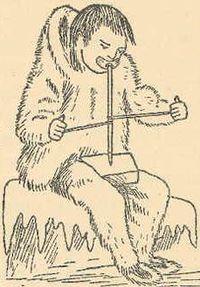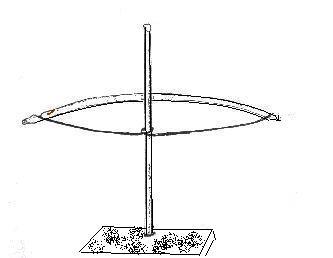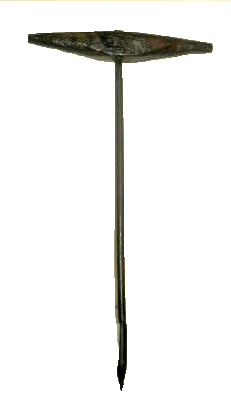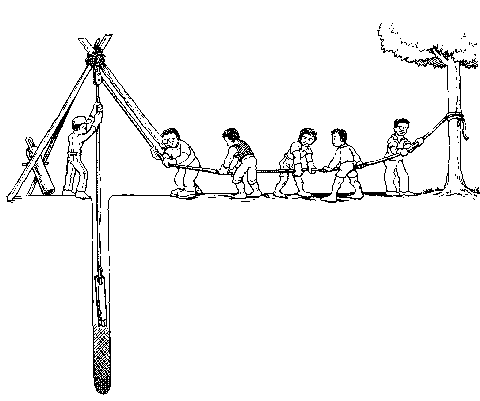The history of the drill from the ancient to the present, to understand how we got to modern drilling tools. By the drill guide, the drill string then became the drill of a bow, until you get to the augers and percussion drills.
The first traces of the drill manual
 The first traces of drilling on materials such as stones, teeth and bones date back to the stone age: Homo Sapiens had discovered that by applying a simple rotational movement and pressure to a stick on a surface it was possible to create the holes, experiencing a first form of drill manual sometimes combined with the use of abrasive materials such as sand.
The first traces of drilling on materials such as stones, teeth and bones date back to the stone age: Homo Sapiens had discovered that by applying a simple rotational movement and pressure to a stick on a surface it was possible to create the holes, experiencing a first form of drill manual sometimes combined with the use of abrasive materials such as sand.
Sometimes, also, instead of rubbing the stick between the hands, the operator used a lanyard twisted the stick which pulled in the end. With this technique it was not possible to the same to the rotary movement, but with less strain on the operator (see the image below). This rudimentary tool to allow a faster rotation and thus a higher efficiency of drilling.
Already in the paleolithic, then, the ancients used drilling techniques to build tools, weapons, etc. Finds of ivory, shells, or bones, drilled, dating back to ancient times have been found in many parts of the World, demonstrating that this technique was used by several civilizations.
Minimize the effort of drilling: the drill arc
 In or about the year 8000 BC, then, many civilizations discovered that by tying a rope around a stick to hold it vertically and attaching the ends of this rope to the end of another stick in place instead in a horizontal position (to form an arc), you could get the same effect as drilling, but with less effort.
In or about the year 8000 BC, then, many civilizations discovered that by tying a rope around a stick to hold it vertically and attaching the ends of this rope to the end of another stick in place instead in a horizontal position (to form an arc), you could get the same effect as drilling, but with less effort.
Thus was born the so-called "drill-arc", which was used to pierce the wood, the stone, for dental work and to ignite the fire. In addition to allowing a higher rotational speed than the drill string, allowing also to exert greater pressure on the stick with the tip, which could be carried out with the hand instead of the mouth-as was the case before.
This type of drill was used throughout Europe, Asia, Africa and North America but is thought to be born in Egypt.
In ancient Rome, was born, then a tool similar to this, but where the vertical stick is inserted in the horizontal through a hole. Then there is a string tied to the ends of the horizontal stick and a hard heavy slipped at the end of the vertical stick (for precise drilling). Both the rotation speed of the pressure increase with respect to the tools of the previous.
This system is still used for delicate work and small work of jewelry.
Maximize the strength of the twist: the first augers
 Between the roman era and the middle ages are experience of the first forms of auger manual, which was used to make larger holes with greater torsion. These drills were composed of an upper part that served as a handle to make the rotating movement, and a lower part which represented the "tip" for drilling. In this way, make a hole wider than it was more simple and, in fact, these augers rudimentary and were not only use for drilling but also to widen the holes that already exist.
Between the roman era and the middle ages are experience of the first forms of auger manual, which was used to make larger holes with greater torsion. These drills were composed of an upper part that served as a handle to make the rotating movement, and a lower part which represented the "tip" for drilling. In this way, make a hole wider than it was more simple and, in fact, these augers rudimentary and were not only use for drilling but also to widen the holes that already exist.
In the middle Ages is then made a substantial change to this instrument: instead of putting both hands on the "handle" top to rotate the auger, it was discovered that it was possible to perform a continuous rotation and less demanding by creating a crank. The auger then takes the form of segmented with a "u" to the horizontal to place the hand, and a pomellino at the top to support the other hand and apply pressure. This form is still used today in trapani manuals with support to the chest.
The new requirements of drilling: the first forms of percussion drill
 Very important for the evolution of the drilling was the invention of a rudimentary form of percussion drill took place in China in 500 BC. Initially it was a piece of wood tied to a rope that, with a system of levers was used to make the percussion on the ground, allowing you to drill holes in the rock.
Very important for the evolution of the drilling was the invention of a rudimentary form of percussion drill took place in China in 500 BC. Initially it was a piece of wood tied to a rope that, with a system of levers was used to make the percussion on the ground, allowing you to drill holes in the rock.
From that moment to the traditional drilling press, we have added a new method of drilling that has allowed him to work on surfaces that are much more spacious, creating holes wider and deeper.
Between this invention and modernity, there have been substantial modifications of the tool, which was applied primarily for the creation of wells.
The turning point of modernity: the patents of end 800
 The drill as we know it today began to take shape after the invention of the electric motor, and more precisely in 1889, with the patent of the electric drill, which opens the way to the first drill portable electric created by the brothers Fein in Germany in 1895.
The drill as we know it today began to take shape after the invention of the electric motor, and more precisely in 1889, with the patent of the electric drill, which opens the way to the first drill portable electric created by the brothers Fein in Germany in 1895.
The shape which they have now our drills more common, it derives from the patent to Black&Decker in 1917: pistol grip and starter button-style trigger.
This outlines one of our trapani contemporaries, which therefore needs its technology to the brothers Fein and the shape of the Black&Decker.
Are, however, missing the drills manual, which alongside those of pneumatic and electric in a variety of the drills that we have available today.
Still today the rotary movement remained the main method for drilling but the techniques have evolved greatly.
Sources:
"Development of Drilling Technics from Ancient Ages to Modern Times" - IFToMM World Congress, Besançon (France)
"Drills and Bits in the Middle Ages" - Primitive Method
"Drill History" - Wikipedia
Image 1 "drill string": LowtechMagazine.com
Image 2 "drill arc": WildernessSurvivalSkills.com
Image 3 "auger": Ebay
Image 4 "percussion drill": Wellspringafrica.org
Image 5 "patent Black&Decker": Google Patents














